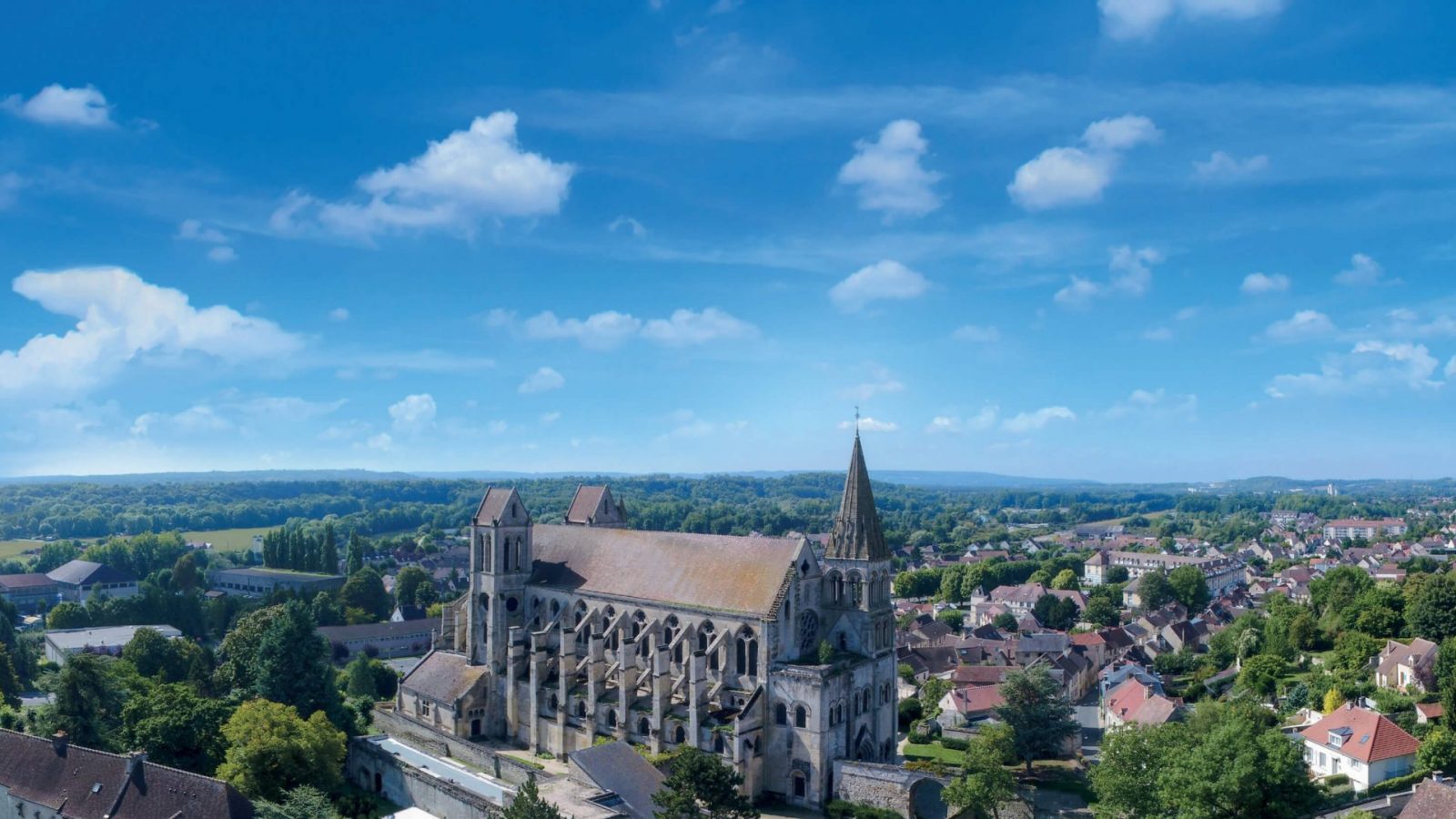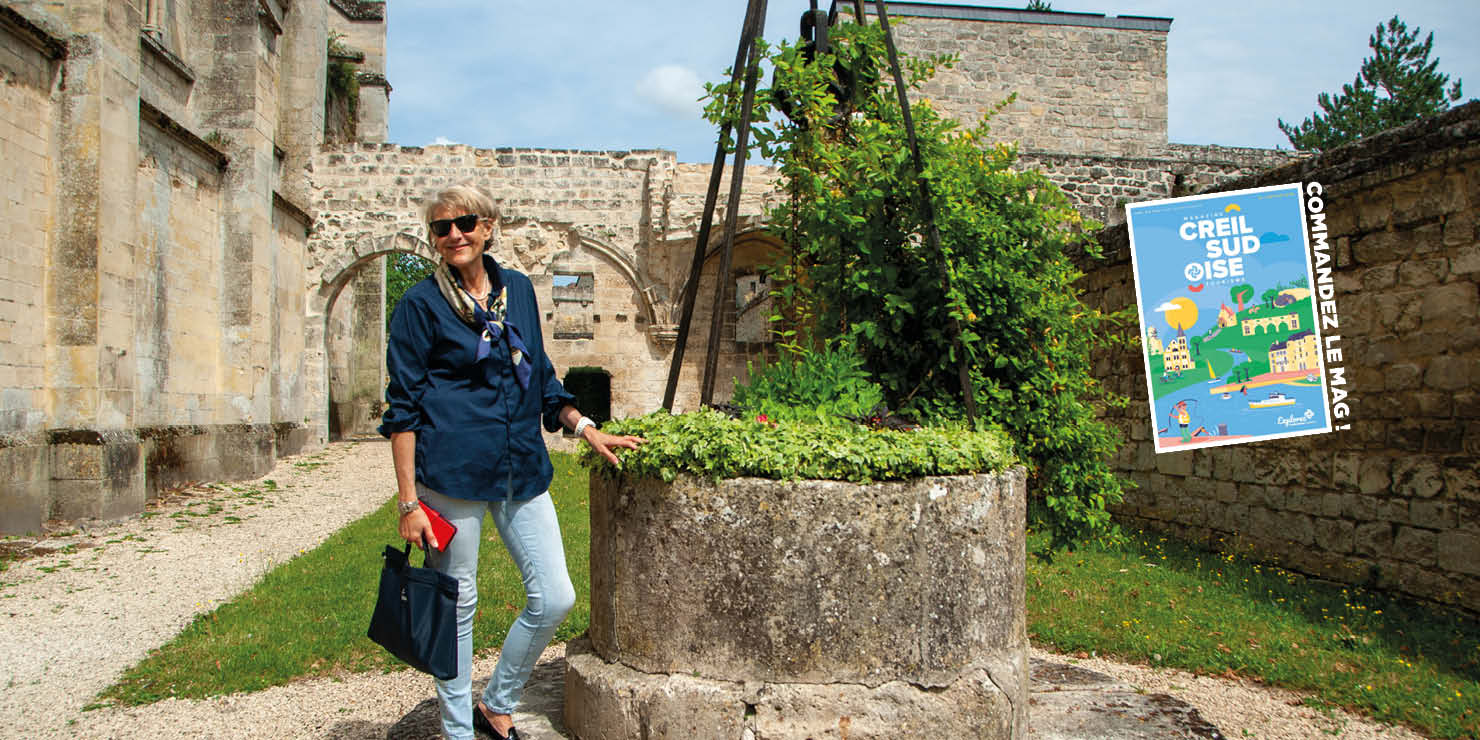Reading time: 7 minutes
22 August 2024
Our ambassadors
Overlooking Saint-Leu-d'Esserent and the banks of the River Oise, everyone can see it, but do we really know its history and secrets? Discover the Abbey of Saint-Nicolas thanks to the visit of Françoise Roy, tour guide for Villes et Pays d'art et d'histoire in the Picardy region.

We met with Françoise Roy, guide and history buffwho tells us about this Abbey church.
Over 1,200 years of history
Before becoming a tour guide, Françoise Roy worked in commerce. A few years ago, she decided to change careers, and it was only natural that she should turn to her passion for history and become a tour guide in the department she loves so much. Françoise then fell under the spell of this beautiful building, the Abbey Church of Saint-Leu-d'Esserent, with its countless special features.
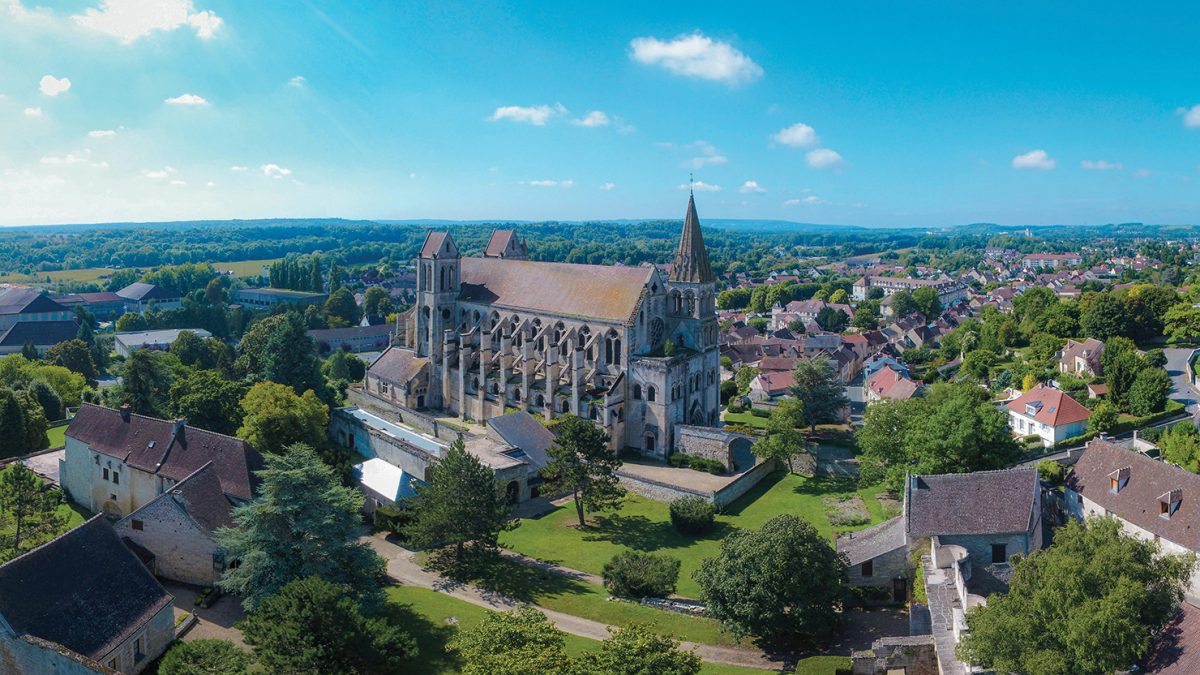
The first is that it is made up of several constructions. Based on the hypotheses of Delphine Hanquiez, lecturer and doctor in art history, Françoise Roy explains to us "thatthere were three successive buildings first of all a church on 10th century which disturbed a Merovingian burial site, as sarcophagi were found near the current entrance.
This church was built by monks for their monastery, which grew in importance in the 11th century.th century when a Cluniac priory was founded in 1081: " This church also tells us a story, says Françoise Roy, that of Hugues de DammartinThis was a medieval lord who, having reached the middle of his life, decided to work for his salvation by donating the church of Saint-Leu to the bishop of Beauvais, thus offering it to the Cluniac order. This donation was accompanied by other gifts: land, vineyards, mills and passage taxes, which would enable the construction of a church worthy of the Cluniac order, which was then in full expansion..
His descendant, Renaud de Dammartin was a typical medieval aristocrat who enjoyed waging war and taking over land and churches. He attracted the wrath of the Church who excommunicated him, one of the worst punishments that could be inflicted on a person. Surprisingly, despite his excommunication, his recumbent statue can still be seen today in the Abbey Church.
Following donations made by his grandfather, Hugues de Dammartin, the monks launched a series of construction projects, the first of which was the western section, i.e. the entrance to the church with its various porches. The existing church was kept; they simply added this worship and processional space and a southern tower. In 1160, the choir began to be built, along with the two large towers overlooking the Oise valley. Finally, from the 1180s onwards, the monks set about building the nave, i.e. the junction between the western section and the choir. Historians estimate that the main work was completed around 1210.
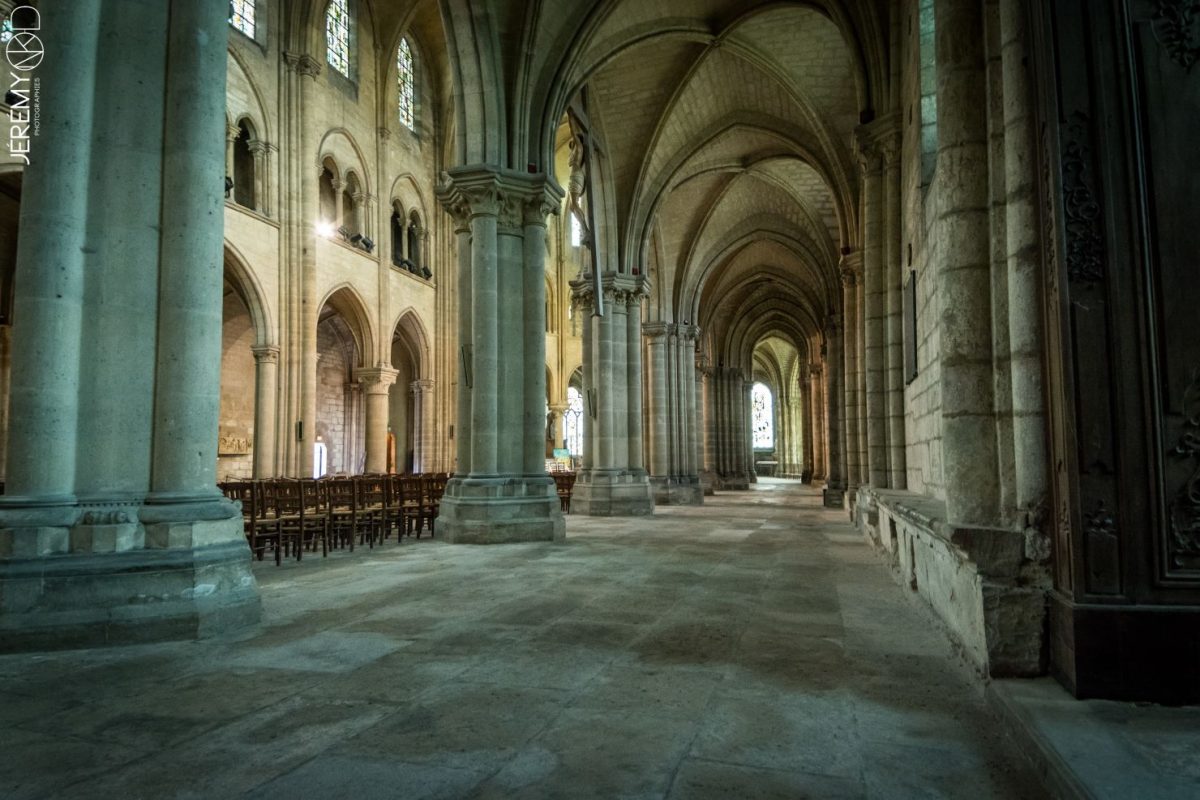
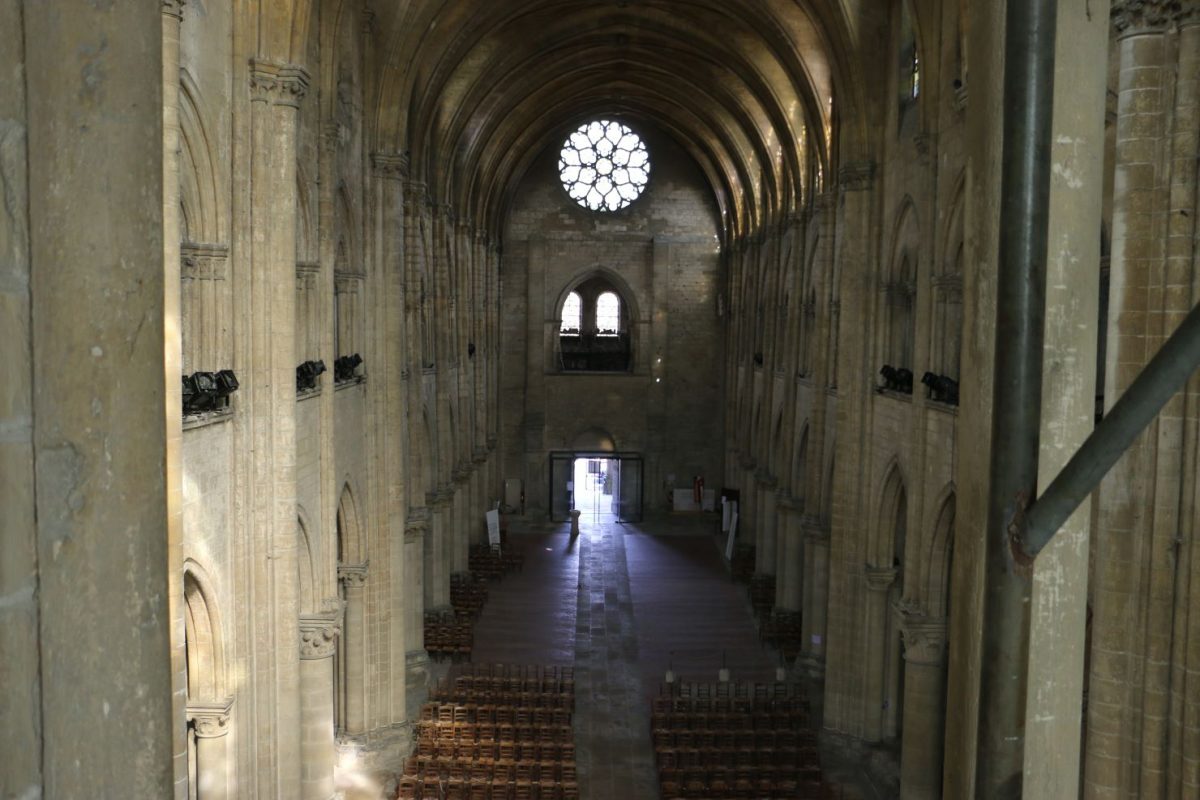
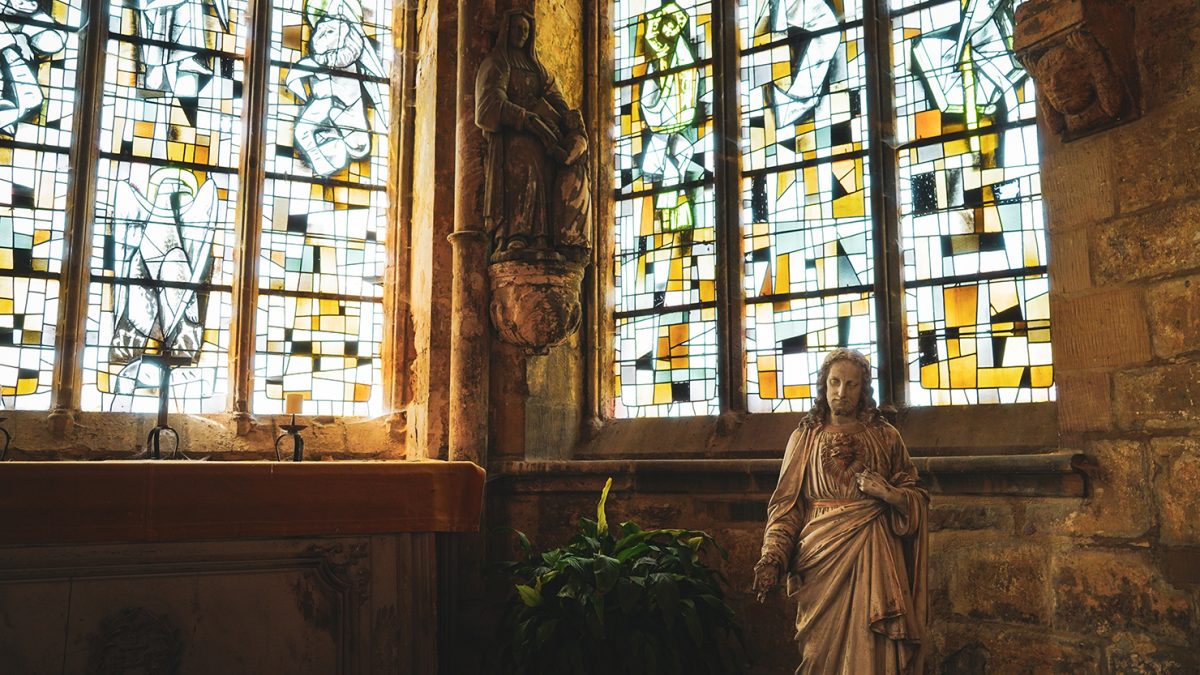
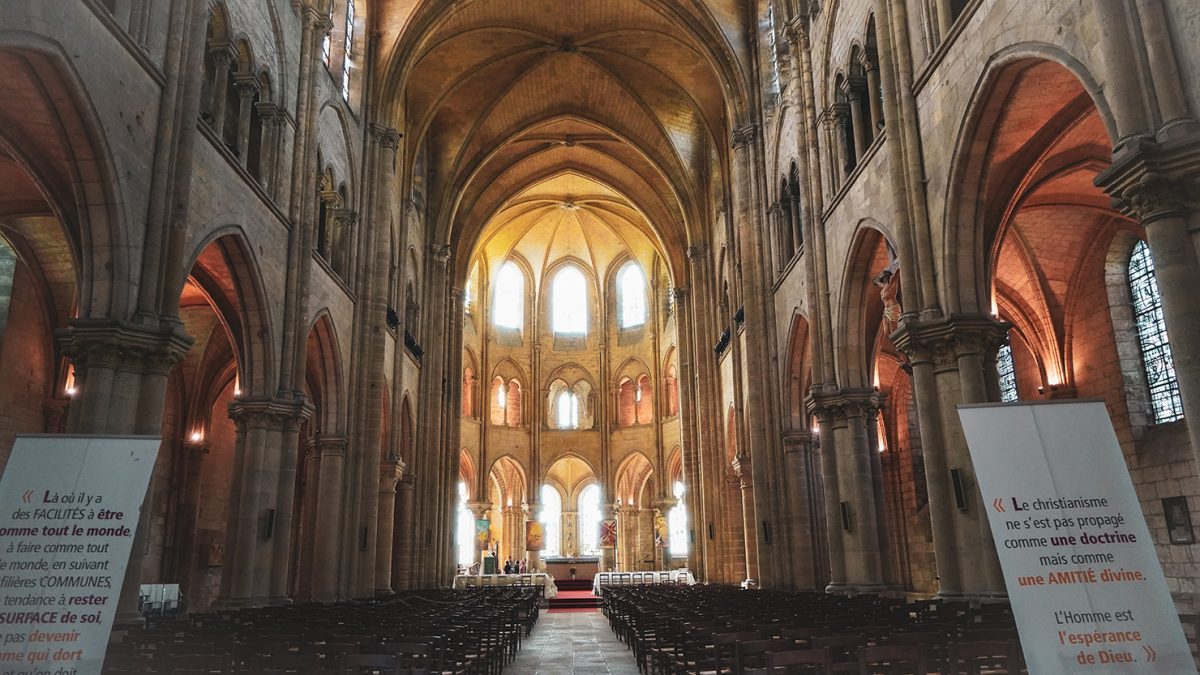
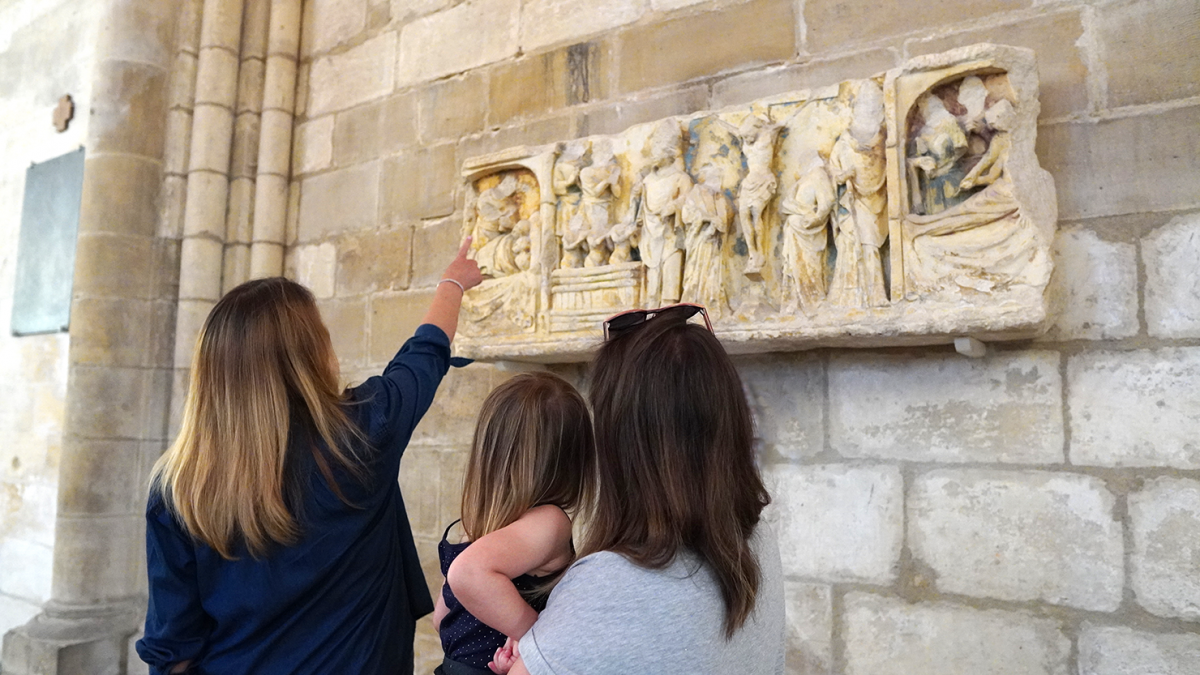
Even if it's not obvious to the less well-informed, there are clues in the architecture of the monument that show its different stages of constructionFrançoise Roy will tell you all about it during your visit: "You can see it from a distance: the wall at the entrance is not centred, as they have attached their western massif to the church that was there.
What does the term "Abbey" mean?
Unusually large for a monastery church, which numbered around thirty monks at its peak, In its day, it was known as "the little cathedral"..
Bigger than Senlis cathedral, The priory of Saint-Leu-d'Esserent was named Abbatiale for its size and regional influence. It is in fact the largest of the four existing Cluniac priories in the region, not to mention the fact that the king was present when it was founded, which confirms the importance of this building.
For Françoise Roy, it's even "One of the most interesting monuments in the heritage of the Isère region, linked as it is to the geographical, political, religious and economic history of the region..
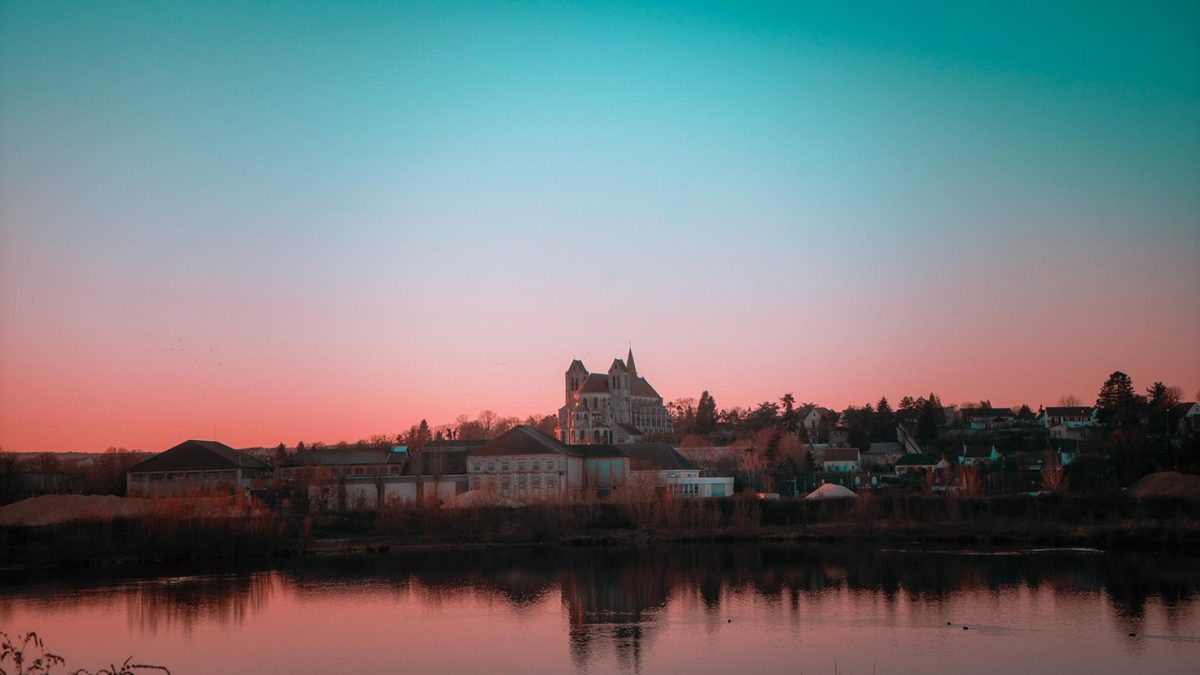
The importance of Saint-Leu-d'Esserent in medieval times
As with Creil Castle, Saint-Leu-d'Esserent's main strength is its location on the banks of the River OiseHence the name of the Abbey church: " Saint-Nicolas was the patron saint of bargemen and boatmen. We're a stone's throw from the River Oise, which used to be an important trade route. Françoise Roy points out.
It's at 12th century, during the construction of the Abbey church, that the city becomes really important : "This Cluniac monastery held a special place alongside the order's mother house in Cluny, Burgundy, and benefited from influential patrons such as the Count of Clermont, who was the priory's avowal around 1176. He transferred the fair of his castellany from Creil to Hescerent (Esserent) in order to increase the monastery's income and resume work on the church.
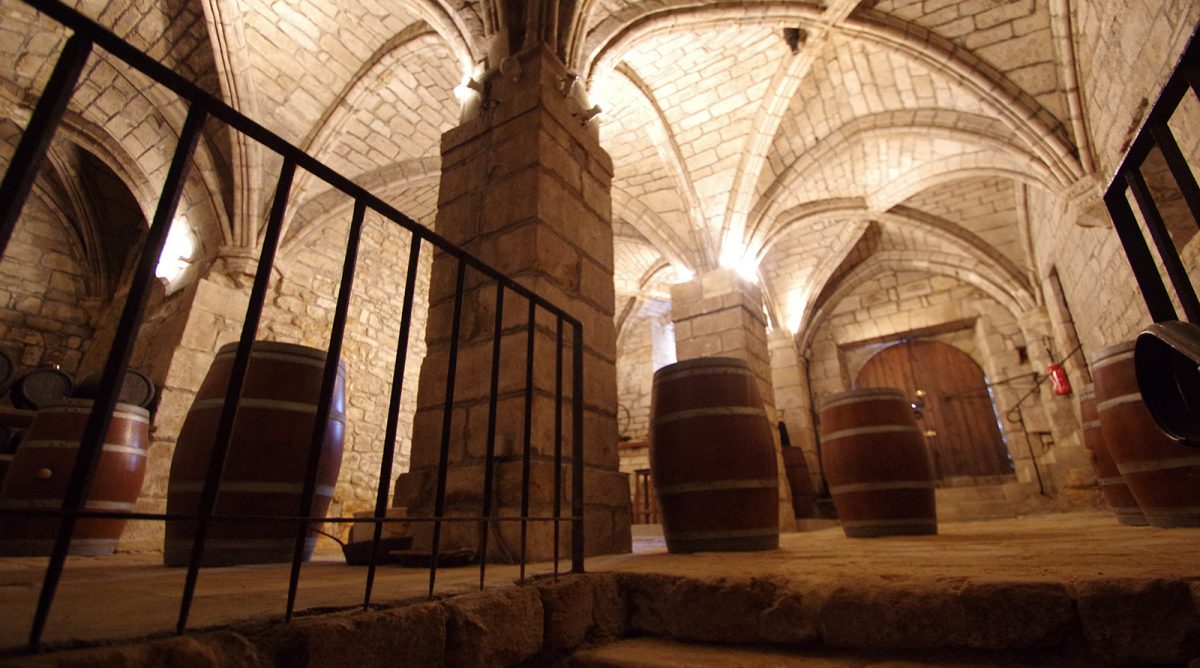


Not to mention the monks of the Abbey were monk lords thanks to the donation of land and rights of way by Hugues de Dammartin. The monks thus enjoyed the right of ban, allowing them to sell their wine first, which they stored in the Banvin cellar below the Abbey Church in Rue de l'Église, which your guide will also show you.
Architectural styles that evolve over the course of history
What also makes this Abbey exceptional is the diversity of architectural styles of which it is composed. The first church was Carolingianthen a western massif novel was added to it. Then, the choir from the second half of the 12th century was added.th century is GothicA revolutionary style, as Françoise Roy explains: "Gothic wasn't called Gothic at all at the time, but opus francigénum, which meant '...'.French art'. " An architecture that transformed the French landscape and still leaves its mark today. Finally, the windows of the chapel on 13th century are part of the radiant gothic.
The Abbey church was not spared by the Second World Waras Françoise Roy recounts: "In 1944, a bomb fell on the north tower. It didn't explode, but the blast caused damage. The bomb was dropped by the Allies, as Saint-Leu-d'Esserent was where the V1 missiles that were to destroy London were stored.
We could also write many lines on the various ornaments decorating the capitals, towers, keystones and woodwork of the 18th century.th in the south chapel, but the best way to discover them is on a guided tour of the church. a guided tour. And our tour guide won't tell you otherwise: "Visiting these sites means visiting history in a different way, weaving a tangible link with the past thanks to the remains, witnesses to a distant past that comes to life during a visit. And let's not forget that a visit is first and foremost an opportunity for people with a passion for history to get to know each other..
Contact the Tourist Office to organise your visit!

Diane Maat – Com'Positiv
Access
Want to find out more?
This beautiful report was written to coincide with the release of the brand new Creil Sud Oise Tourisme's first Destination Magazine.
Inside, numerous other articles will take you to meet local figures and offer ideas for outings!
Order at to receive it in hard copy!
Click here to order
